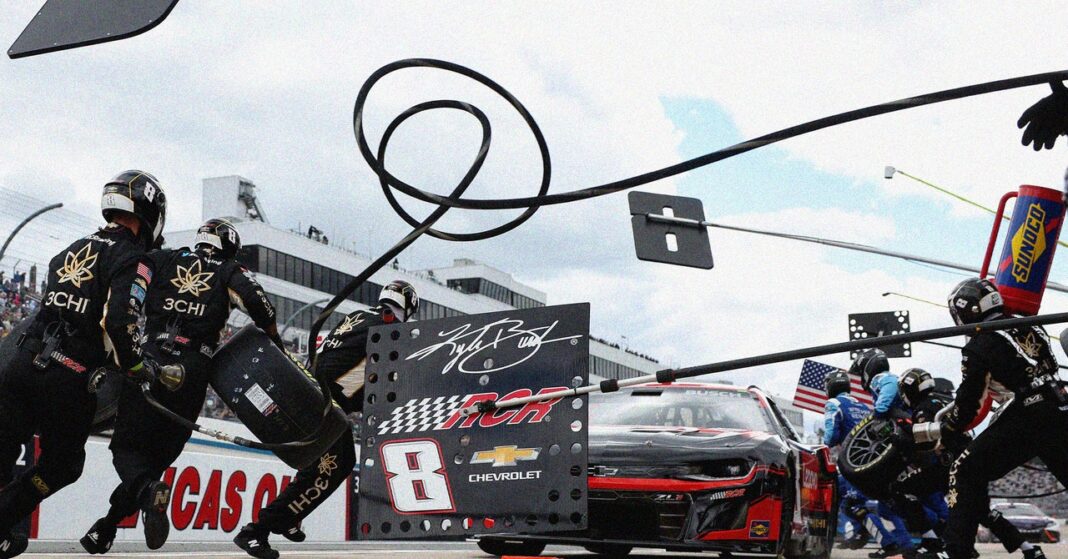In Short:
Liberty Media has expanded Formula One in the US, but NASCAR is still growing its TV audience. NASCAR’s stock cars feature powerful V8 engines, and teams are using AI, with help from Lenovo, to improve pit stop strategies, especially during fuel refueling. Unlike F1, NASCAR teams don’t use fuel gauges, making precise fuel management critical for race success.
Formula One’s financial benefactor, Liberty Media, has successfully integrated the sport into its American heartland, evidenced by the presence of three Grand Prix events in the United States. However, despite this growth in Formula One, it is Nascar that continues to expand its television audience, even as there is a slight decline in viewership for the “open wheel” F1 and IndyCar championships.
European race fans often hold a dismissive attitude towards stock car racing; nevertheless, the appeal of a seemingly low-tech, normally-aspirated pushrod V8 engine—boasting a capacity of 358 cubic inches (5.8 liters) and an output of 670 horsepower—charging around an oval track resonates uniquely. This dynamic experience reaches aspects that other racing series may either overlook or have decided to abandon.
Technological Innovations in Nascar
Despite the traditional nature of stock car racing, the Nascar grid is actively pursuing technological advancements. Notably, Lenovo is collaborating with one of the series’ prominent teams, Richard Childress Racing, to enhance their pit stops during races. The number of pit stops in the Nascar Cup Series fluctuates between five and twelve, depending on the specific circuit and race circumstances. Through this partnership, Lenovo is leveraging artificial intelligence to gain real-time insights into refueling processes.
Fuel mileage is an essential aspect of any Nascar race, becoming almost an art form that adds layers of drama and risk. Unlike in Formula One, where refueling has been prohibited since 2010 due to safety and cost considerations, Nascar cars lack fuel gauges in the cockpit. Therefore, it falls upon the strategists of each team to continuously assess the amount of fuel entering the car during pit stops alongside the rate of consumption.
The consumption of fuel is influenced by several variables, such as track length, configuration, and car speed. Races often feature numerous cautions, moments where cars utilize only half as much fuel.
Optimizing Fuel Strategy
While it may not adhere to strict scientific principles, Lenovo’s AI team aims to refine the processes to approach an exact science. By determining the duration of time the fuel cans are connected to the cars, Richard Childress Racing can more accurately calculate the fuel delivered.
In response, Lenovo has developed a system that employs in-car transponders and a camera positioned above the pit box to track when a car enters the pit area, initiating a real-time video feed.
“An AI engine analyzes each frame to classify whether the fuel can is connected or disconnected,” explains Lenovo AI data scientist Sachin Wani. “We operate at 30 frames per second, allowing for an accuracy within approximately 0.03 seconds. Previously, the fuel attendant relied on a rough estimate to pump fuel for about seven seconds, without any supportive devices due to safety precautions.”
“Consequently, this depended on mental calculations, which could lead to inaccuracies—resulting in either under-fueling or over-fueling. Such discrepancies disrupt strategy, potentially necessitating additional pit stops,” Wani remarks.





